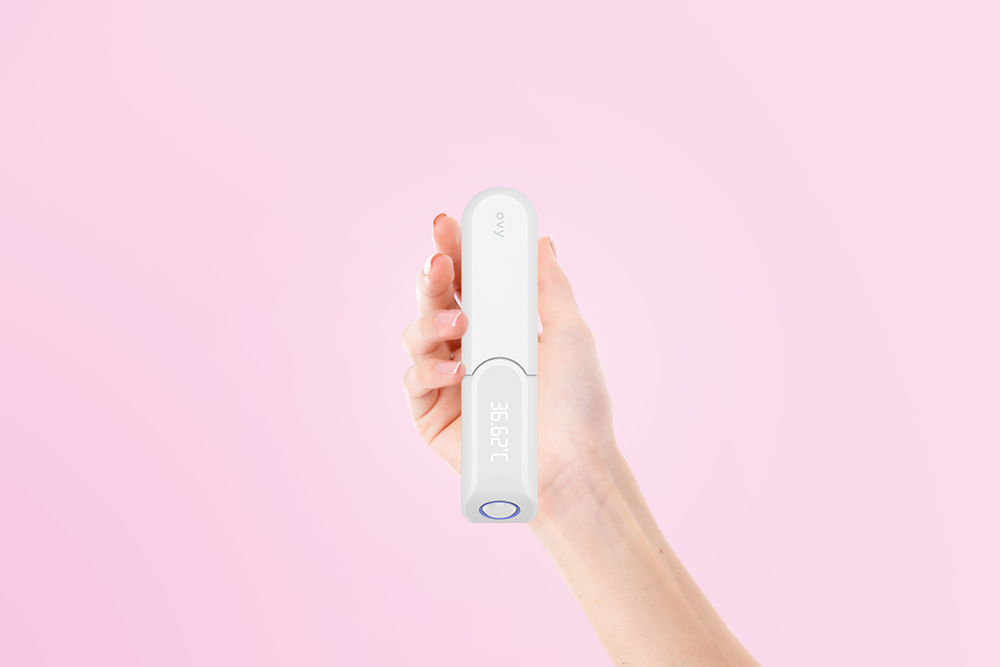Key Takeaways
- The symptothermal method is based on a set of rules that are scientifically recognized and have been practiced this way for several decades.
- One of the rules is that the measured basal body temperature is rounded in a certain way.
- In the article you will learn how to round and why rounding makes the method safer, not less safe.
The symptothermal method is used by women* to determine their fertile days. An important component of this is the measurement of basal body temperature. In this blog post, we would like to take a closer look at the advantages of rounding temperature values in the symptothermal method.
Basal body temperature measurement plays a significant role in determining fertile days for couples who are planning a pregnancy. One of the rules of the symptothermal method is that the temperature values are rounded before evaluation. Beginners are often confused by this fact, because apparently rounding the values would make them less accurate. Or not?
Why is the basal body temperature measured?
Basal body temperature measurement is a valuable method of monitoring the female cycle. This is because the basal body temperature rises significantly after ovulation and remains elevated until the onset of the period. By recording daily basal body temperature, women* can identify their fertile days. Accurately determining these days is critical.
Why rounding?
The symptothermal method was developed in the 1960s including the rules for rounding the temperature. There is a simple reason for this: at that time, analog thermometers were used, on which it was not possible to read crooked values (such as 36.32 °C, 36.78 °C or 36.57 °C). Therefore, the rules of the method are based on evaluating with rounded values. In those days, women* rounded up or down to the nearest 0.05 digit on their analog thermometers, because only these values could be read, depending on whether the scale stopped on a dash or between two dashes.
When digital thermometers were introduced in the 1970s, the rules of evaluation were not changed, but a guide to the correct rounding of digital measurement results was created.
How to round?
The following rules apply:
If the measured value ends in 8 or 9, it is rounded up to 0.
For example:
36.49 becomes 36.50
36.38 becomes 36.40
If the measured value ends in 7, 6, 4 or 3, round up or down to 5.
For example:
36.23 becomes 36.25
36.34 becomes 36.35
36.56 becomes 36.55
36.87 becomes 36.85
If the measured value ends in 2 or 1, it is rounded down to 0.
For example:
36.22 becomes 36.20
36.61 becomes 36.60
Advantages of rounding temperature values
When rounding temperature values, there are some clear advantages that support the use of this method.
1. simplified interpretation:
Rounding the temperature values helps to smooth out small fluctuations and irregularities. This simplifies the analysis of the temperature curve, making it easier to see clear patterns and trends. This is especially helpful for women* who are new to the method or have difficulty interpreting the curve.
2. reduction of confusion:
Sometimes temperature values can vary slightly from day to day without a clear pattern. Rounding the values can help reduce these small variations and provide a clearer distinction. This provides women* with greater confidence in determining their fertile days.
3. increased user-friendliness:
Rounding of temperature values makes the use of the symptothermal method more user-friendly overall. It facilitates documentation and interpretation of the curve, making the entire cycle monitoring process less time-consuming and complicated. This can increase women*s motivation and engagement in using the method.
4. Safe evaluation:
Proper use of the scientifically approved method requires rounding the temperature values according to the rules listed above. So if you want to evaluate yourself and get a safe result, you should follow this set of rules and enter your temperature values correctly rounded in your cycle curve.
By the way: The Ovy App automatically does the rounding for you. In the start screen you will see the unrounded temperature value for the displayed day. In the cycle curve and in the cycle report, however, you will see the rounded value, which is also entered in the graph.
Medically Reviewed
This text was created by medical editors on the basis of specialist medical literature and current studies. Our aim is to work scientifically, identify sources and regularly check that the content is up to date.





